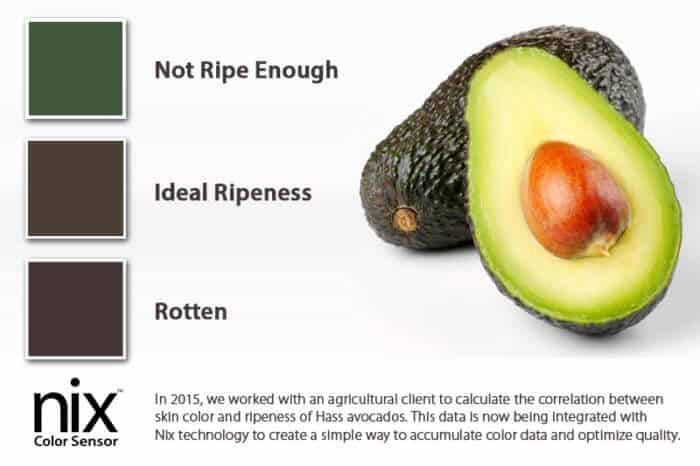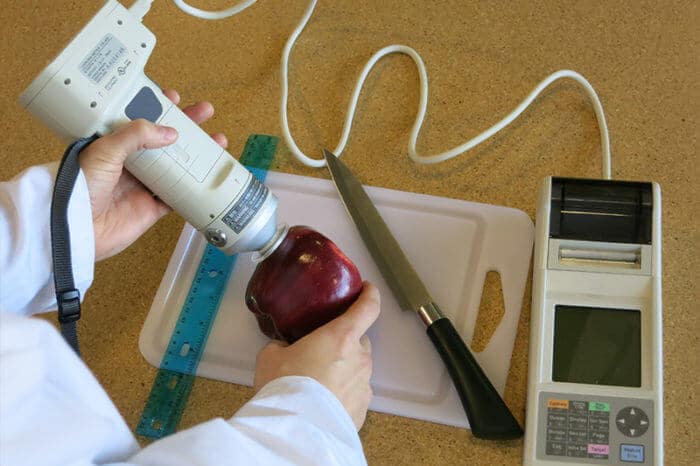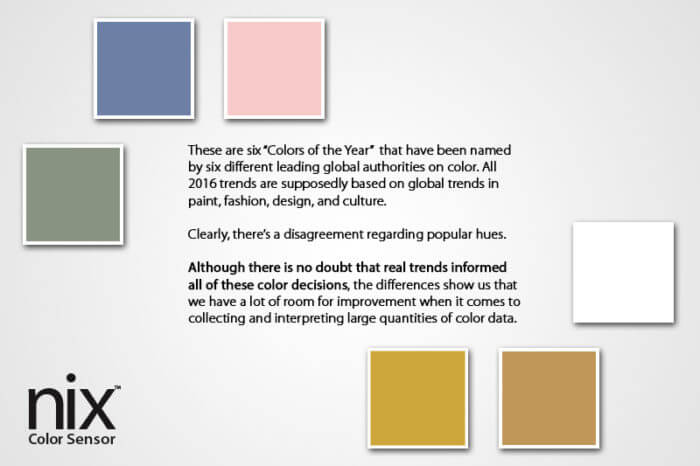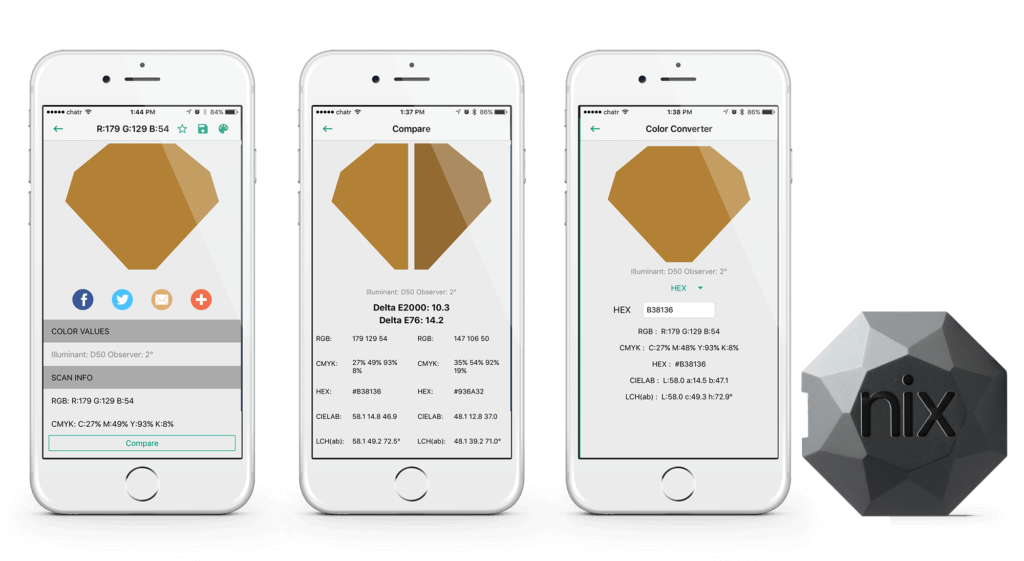How connected color measurement devices are changing the way we track color trends and color quality
Throughout history, color has been the domain of the artists and creative people in our society, like painters, architects, and designers. Aside from a well-developed understanding of color theory, decisions about color are made largely on intuition or taste. However, in today’s world, color decisions can have economic consequences, not just aesthetic ones.
For example, when you need to match a paint color on your wall, verify that brochures have your company colors correct, or even determine if an avocado is ripe or not, using intuition instead of data can be costly as well as unsightly. And if you’re a fruit producer that exports thousands of pounds of avocados on a weekly basis, misjudging the ripeness of your crop can have a serious impact on your bottom line.

Even though we know a lot about color harmony and color psychology, color measurement hasn’t evolved much in two hundred years. Despite incredible advances in just about every other type of industry, most people still have to use fan decks (colored pieces of paper) to match and measure color, which is highly subjective and inaccurate as fan decks will fade and soil easily.
If you are looking for a more definitive color reading, you’ll have to spend thousands of dollars on a spectrophotometer.

As smartphone use is growing worldwide, we have an incredible opportunity to leverage the supercomputers in our pockets to change how we measure and communicate color.
In particular, emerging devices like the Nix Pro Color Sensor capture accurate color data from any surface then provide that information to the user’s smartphone where it can be organized, matched to existing colors (like interior paints or vinyl films), and used in color quality evaluations.
The immediate impacts of connected color sensors will most certainly be felt in two key areas – the application of color trends that drive our creative industries, and the measurement of color quality in our manufacturing processes.
Globally track color trends in real time
Color trends drive our fashion and design industries, but without a way to actually track what is happening in the world of color, trends end up being arbitrarily assigned rather than organically discovered. Just look at all these ‘colors of the year’ for 2016, all of which are supposedly based on global trends.
Imagine if every designer in the world – fashion, cosmetics, graphics, interiors, and production – had the means to share the colors they found most captivating? Trends could be tracked in real time, and would be based on actual data, not just the travels of a select few.
“It’s hard to explain to anyone how you really arrive at the specific color. But it’s picking up nuggets of information wherever you travel — and I travel all over the world. If I see that a color is coming into prominence (for instance, if I’m in Asia and I see the same color in Italy and Germany), then I would say that color is on the rise and starts to have a collective impulse.” (Leatrice Eiseman, the Executive Director of the Pantone Color Institute)
With a connected color device like the Nix Pro, such data could be easily collected via a simple smartphone interface, and sorted by country, region, or city. We could even see how color trends spread across the globe, from Paris and Milan to New York and Kyoto.
Data-driven color quality control
Having access to aggregated color data would also be of incredible importance to industrial and manufacturing processes from an economic perspective.
Consider; what shade of red is a Coca-Cola label? How much can a single label deviate from “Coca-Cola Red” before it’s no longer a commercial match? How is that measured? How is that tracked?
Most importantly, how many labels have to be thrown away per year because they don’t meet brand specifications, and how much can Coca-Cola reduce this cost?
Only the best printing shops (by no means all of them) will have a spectrophotometer or a lightbox on hand where they can test random samples, which can be time-consuming and requires the presence of a trained expert. The problem is that most packaging manufacturers have a 24/7 print run, and experts don’t work night shifts. This means that there is always a risk that an entire night’s run has to be wasted.
A connected color device such as the Nix Pro empowers employees of all skill levels to be part of the color quality control process, which provides manufacturers with more granular data that is digitized and sortable in .csv format – something that fan decks and spectrophotometers could never do. Products of varied textures and materials can be quality-checked more often and with greater certainty, reducing waste and ultimately achieving higher profitability for everyone in the supply chain.
Other Opportunities: From Avocados to Hollywood
At Nix Sensor Ltd., we’re working on exciting projects in all sorts of color-related industries. Here are just a few;
- Paints & Coatings
- Food & Agriculture
- Textiles Manufacturing
- Packaging & Printing Quality
- Cosmetics
- Color Measurement for Film & TV
- Interior Design
- Architecture
- Graphic Design
Besides color, the one thing all these industries have in common is the need for an accurate, affordable, simple, and internet-connected color measurement solution that belongs in the 21st century.
Fan decks and spectrophotometers certainly have their place in color workflows, but we are now working in a connected world where we can collect and measure large amounts of data in order to make better color decisions.
At Nix, we believe that color is both an art and a science. By embracing both of these qualities, artists and technicians alike will find new ways to appreciate and master color.

